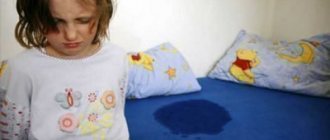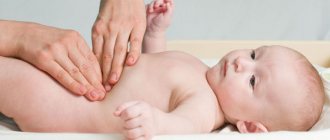1 August 2021, 13:05
- How to avoid acclimatization to the sea in a child?
- How does acclimatization manifest itself?
- Possible symptoms of acclimatization
- How long does acclimatization take for children?
- What to do with a child’s acclimatization to the sea?
- Reacclimatization of a child after the sea
Acclimatization is the process of adapting the body to new conditions: to a different climate, to a different daily routine and environment, to different food and water.
How to prepare for this misfortune and how to minimize its harm? How can you try to make the transition process less abrupt? Basic conditions:
- It is better to change the climate gradually - by traveling by land rather than flying by plane.
- Do not choose too hot ones: summer periods and holiday regions.
- It is advisable that the time difference does not exceed 3 hours.
- Preparing your child for the trip:
- Mentally prepare your child for a change of scenery - tell him about the trip.
- First change the children's daily routine and reduce the load.
- Keep your child in quarantine for a week before the trip to avoid catching a virus or cold from other children.
- A month before your trip, take a multivitamin complex to strengthen your immune system.
Take with you:
- “Homemade” water and the baby’s usual treats for the first time.
- Stock up on medications (sample list below).
Let's add two humorous, but logically correct pieces of advice. First, go on long-term vacations. Give the child's body more time to adapt to new conditions. Secondly, do not take children to other climate zones. And seriously, it is especially not recommended to change the climate for children under 3 years old. This is very stressful for them. It’s worth sacrificing your pleasure and allowing a child’s fragile body to build immunity in a calm environment.
In this short article we will skip the complex issue of acclimatization of children in exotic countries with humid climates, and will not take responsibility for advice for acclimatization of infants and toddlers.
What is acclimatization? In a few words, this is stress for the body from unusual conditions.
What is acclimatization
Quite often, when a family comes on vacation, children suddenly begin to act up, become lethargic, develop a fever, and sometimes develop a runny nose and cough. Many parents mistake these symptoms for a cold and begin treatment, which in most cases does not bring results.
This is not a disease, but signs of acclimatization that appear in children after moving to a new place. The child’s body finds itself in a new climate, where the temperature regime, altitude above sea level, time zone, nutrition, etc. are different. To adapt, it begins to rebuild, and at this time the person feels discomfort. It is especially difficult for an unformed child’s body.
Characteristic manifestations
Once in new habitats or after major changes in diet, certain phenomena may occur that indicate the beginning of acclimatization.
- Signs of rotavirus infection or manifestations of poisoning:
- diarrhea;
- severe nausea;
- repeated or one-time vomiting;
- temperature rise is possible.
- Sleep disorders. The baby either becomes overly sleepy or begins to suffer from insomnia.
- Headache, constant dizziness. The little ones may cry and be lethargic.
- Symptoms characteristic of a cold:
- nasal congestion;
- a sore throat;
- elevated temperature.
- Changes in behavior, worsening mood. The baby may become capricious, irritable, and whiny. And this will make it even more difficult for parents to determine what is bothering their child.
Signs of acclimatization
Almost immediately after the family arrives on vacation, initial symptoms appear, and acclimatization causes the first inconvenience. It is especially difficult for children under three years of age, since the older the child, the calmer he tolerates the move.
Parents notice the following signs of acclimatization in their children: • a sharp decrease in appetite; • slight dizziness, general lethargy and malaise; • unreasonable whims, especially in young children; • increased body temperature; • symptoms of gastrointestinal disorder; • cough, runny nose, sore throat and other symptoms of ARVI; • restless sleep and even insomnia.
Typically, these symptoms appear 1-2 days after a sudden climate change, and acclimatization in children can last from three to ten days. The better the physical health of the child, the less negative consequences of the restructuring of the body.
Useful tips: how to make acclimatization easier for children after the sea?
To prevent children from developing a fever as a result of acclimatization after the sea, it is important to take measures at the stage of preparation for the trip.
- When purchasing a trip, keep in mind that the optimal duration of a vacation with children in other climatic conditions is at least 20 days.
- Plan your trip so that you return home in the evening. This will give the child the opportunity to have a good rest after a tiring flight and regain strength faster.
- In the first days after returning from the sea, try to avoid serious physical and mental stress, stressful situations and negative emotions.
Acclimatization in children after the sea will cause less trouble and will not lead to an increase in temperature if the immune system is in order. The following will help strengthen natural immune defenses in children:
- maintaining sleep and wakefulness patterns,
- proper nutrition,
- sufficient physical activity,
- walks in the open air,
- hardening procedures,
- taking vitamins.
Stages of acclimatization
It is important to know how long acclimatization lasts in children. The entire process of adapting the body to new conditions can be divided into several stages.
Here are the main ones.
1. Initial stage. This is the initial period of adaptation, during which no obvious changes or pathologies are observed. During it, the child’s body receives maximum information about changes in the environment and begins preparations for transformation.
2. High reactivity stage. This is the most dangerous moment; acclimatization can be difficult and a child, especially a small one, experiences enormous stress. A restructuring of the entire body occurs, with pronounced symptoms and a sharp deterioration in the baby’s condition. Symptoms last from 3 to 10 days.
3. Leveling stage. A pronounced adaptation ends, the painful state passes and the normal functioning of all body functions is resumed.
4. Full adaptation stage. This period is relevant when moving to a new climate zone for permanent residence. The process can last from 2-3 months to several years.
Despite the apparent negativity associated with acclimatization in children, it is a beneficial process for a healthy child. During a biological change, the body acquires new abilities and becomes resistant to chronic diseases. This can be compared to hardening, when each subsequent restructuring of the body takes place faster, and the protective functions of the body improve.
Ways to facilitate acclimatization in a child
Remember that acclimatization symptoms last up to two weeks, so you need to plan a long vacation with your child.
- If the child is under three years old, try to choose resorts in a similar climate zone. In case of crossing several time zones, it is necessary to prepare and change the child’s schedule.
- To prevent your child from developing problems with the digestive tract, which they often do, be careful with what you eat. Don't let your child try exotic fruits, vegetables, or dishes. Make choices about your child's daily dietary habits.
- One of the important sources that helps cope with the adaptation process is water. It will help the body overcome all obstacles. Use only bottled water to prevent your child from getting poisoned.
- While on vacation, do not give your child prophylactic medications, because the medication causes unexpected reactions in the body during acclimatization, and this can ruin the entire vacation.
- Don't forget about warm clothes. Climatic conditions are different, it can be hot during the day, but in the evening it’s already cool, the child can freeze and catch a cold.
- Children are advised to be in the sun before 11am and after 4pm.
Beware of air conditioning, cold drinks. Be sure to use sunscreen even when the sun is hidden behind the clouds. The duration of a child's exposure to the sun on the first day of rest should not exceed 3 minutes, and the time can gradually increase to 20 minutes a day. For the first time, the child should not be in the water for long. You can gradually increase the time. Do not forget that a child can get burned not only from the sun's rays, but also from sand, which is very hot for the child's sensitive skin. Therefore, you should take care of children's shoes and beach clothes in advance. - When the child returns home, the reverse process of acclimatization begins. The child’s body must get used to the home climate from which it has begun to move away. Do not overload your child physically and mentally for the first two weeks after returning home.
- Before traveling to an area with a different climate, it is advisable to consult a pediatrician.
You should know that even if a child does not experience adjustment symptoms, he is still going through major changes. When a child adapts, he reduces activity, physical and mental. But we must understand that acclimatization is beneficial for the child. If it overcomes this difficult biological process, the body is rewarded with new abilities and an improved quality of adaptation to various conditions. Acclimatization equals hardening. Each time it will be easier for the child to adapt to new conditions.
How to avoid problems on vacation
To prevent your vacation from turning into a permanent hospital, to alleviate symptoms and reduce acclimatization time, you need to prepare your child for a future trip.
• First you need to decide on your age. If the child is under three years old and has a weak immune system or some other chronic disease, the trip must be agreed upon with the doctor who is monitoring the child. The rest should last at least 2-3 weeks.
• To travel, choose train or road transport. This type of transportation does not cross climatic zones too quickly, and the child will get used to it already on the road. At the same time, the plane transfers the person to new conditions as quickly as possible and symptoms may appear more clearly.
• A month before travel, take measures to strengthen your immune system. Basic hardening and charging will help with this. The body will gradually get used to extreme stress, and the manifestation of adaptation will not be pronounced.
• Before the trip, it is highly advisable to drink a complex of useful vitamins and microelements. This will help in the future with acclimatization and increase the level of immunity.
• If there is a huge difference in time zones, then it is advisable to adapt to the future regime in advance.
• It is not advisable to take small children from winter to a country where it is summer at that time. This will maximize the load on the child’s immature body. It is especially difficult to adapt from heat to cold when returning.
Features of children's immunity under climate change
The main mistake parents make when planning a vacation with their children is choosing exotic regions whose climate is significantly different from their usual one.
A place for a vacation with a child should be chosen within your latitude, and the Mediterranean climate zone is perfect for this.
Another mistake parents make is the habit of rushing. But this is unusual for a child’s body. The child undergoes acclimatization in about 12 - 16 days, while vacation usually lasts about 10 - 12 days. As a result, as soon as the child begins to adapt to new climatic conditions, he returns home, and then the process of reverse acclimatization begins.
In this regard, do not be surprised by the atypical pneumonia, flu and bronchitis that await the child after the vacation. This trip does more damage than good, so the vacation should be planned for at least three weeks.
There is a principle: the further you take the child, the longer acclimatization takes. Therefore, it is very important that you choose a nearby area for a holiday with small children.
The train is considered an excellent transport for traveling with children. An airplane is a very strong load for a child’s body, since it crosses various climatic zones within a short period of time, and it is very difficult for the body to withstand this. Traveling by train promotes gradual adaptation to a new climate.
On the first day of arrival, swimming in the sea is not recommended for the baby; it is better to wait a day or two until the child adapts to the different air and other conditions. Take a walk with your child throughout the territory, go around the surrounding area.
Adaptation of the body at sea
The sea is the most popular way to relax. But we must not forget that there is a big difference between rest and recovery. It consists of a time period. You can’t go just for a week and gain health for a year ahead. The body can become so stressed that acclimatization to the sea will be very strong, and the result will be the opposite and disastrous. The minimum period of stay at sea for recovery is 2-3 weeks.
After arrival, there is no need to immediately run to the beach and sit in the sun for hours, especially if the start of the trip was the northern regions of the country. It’s better to rest from the road, get some sleep yourself, and let your child sleep. In the first days, you need to eat your usual food, gradually adding exotic and unusual foods to your diet. You also need to refrain from heavy physical activity and exhausting excursions.
What to do with a child’s acclimatization to the sea?
- Place the child in a gentle and comfortable environment.
- Let's sleep more, in sleep it is easier for the child's body to cope with the restructuring.
- Don’t force him to eat: after a while, fresh air will restore your child’s appetite.
- Do not change food suddenly, stick to the correct children's diet.
- Treat symptoms of acclimatization with usual means, preferably simple ones.
- The temperature usually drops to 38.5 on its own within 1-2 days. At higher temperatures, the child can be given an antipyretic.
- At first, do not go on long excursions with your child.
It is better not to keep the child in the open sun at first. It is believed that at first the child should be in the sun for no more than 15 minutes. Various small transitions from place to place in the sun are already enough stress for the baby. Sunbathing from 11 a.m. to 4 p.m. is considered harmful. Use bucket hats and sunscreen. The sun's rays freely penetrate even into the water while he is bathing. Accordingly, limit your bathing time.
Hypothermia is another problem. It can unexpectedly overtake the baby both in the water and under a wind-draft, and the air conditioner has a particularly bad effect.
Adaptation of the body in mountainous areas
The second most popular type of holiday after the sea is the mountains. And, despite the fact that in some countries the temperature is not too different from the native climate, the altitude above sea level will cause no less problems than the heat on the beach. The main reason for this is mountain acclimatization.
During the climb to the recreation center, acclimatization to the altitude is the first thing you need to pay attention to. Hypoxia may appear, and the body will instantly respond to changes in the environment: the pulse, breathing rate and the amount of hemoglobin in the blood will increase. Therefore, before going on vacation, you need to ask the tour operator at what altitude the final point of the trip is. If you need to climb high, and the child is still small, then it is better to refuse this type of rest. Painful symptoms and acclimatization can lead to a threat to the baby’s health. But even if children are suitable in age, special attention should be paid to nutrition. It will soften the first days of your stay in the mountains.
A month before your trip to the mountains, you need to add to your diet: • foods rich in iron: liver (preferably beef), meat and eggs; • apples; • spinach; • porcini mushrooms (for children over 5-6 years old); • buckwheat; • Rye bread; • tea should be consumed only some time after meals, as it interferes with the absorption of iron in the human body.
Homecoming
Even if the vacation was successful and the family returned home happy, acclimatization after the sea or mountains can again cause trouble. To reduce unpleasant symptoms to a minimum, you do not need to send your child straight to kindergarten or school. Let him re-enter the usual rhythm of life, going all the way back. The baby needs to rest and gain strength, so it is advisable to travel during the summer holidays. This will make reacclimatization less pronounced.
And Dr. Komarovsky, whom many parents trust, argues that no matter what vacation the family chooses, the child needs responsible and thorough preparation for a long trip. This will make holiday days easier, brighter and safer for both the baby and his parents.
Useful video about traveling with children
Author
Oksana Belokur Pediatrician
In 2012 she graduated from the Medical Institute of Sumy State University. She received a higher education in the specialty “Pediatrics” and qualified as a doctor. In 2012-2013, there were treatment and preventive activities at the Sumy Regional Children's Hospital. In 2013-2015 worked as a local pediatrician at Children's Clinic No. 2. I am currently on maternity leave. In my free time I do embroidery and knitting, and study English. All articles by the author
I like!











